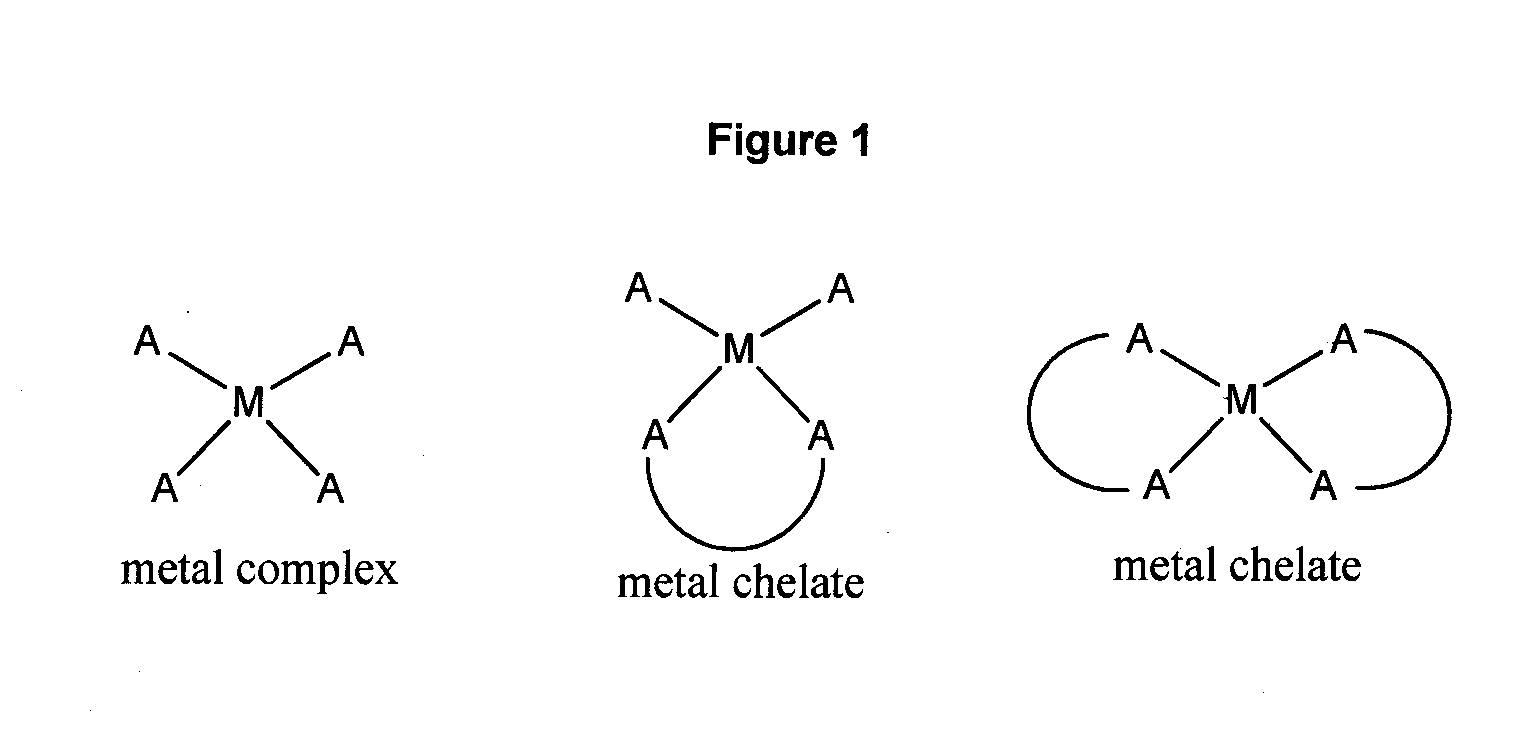Adjuvant for Pesticides
a technology of adjuvants and pesticides, applied in the field of agricultural chemical compositions, can solve the problems of difficult enhancement of agricultural chemical effectiveness, difficult to control the regrowth of mature bolls, and difficult to achieve the effect of enhancing the effectiveness of agricultural chemicals, so as to improve the speed or degree of the opening of mature bolls, the effect of controlling regrowth and improving the degree or speed of defoliation
- Summary
- Abstract
- Description
- Claims
- Application Information
AI Technical Summary
Benefits of technology
Problems solved by technology
Method used
Image
Examples
example 1
[0125]Effectiveness of Dicamba Herbicide on Canada Thistle
[0126]This test was used to determine the effectiveness of dicamba herbicide on the weed Canada Thistle. The dicamba was mixed with water in a spray tank at the listed rate alone (A) or with a permeabilizer (B) and the degree of control of the weed was evaluated. Dicamba alone had an efficiency of about 13% and only slightly damaged the plant leaves. The dicamba and adjuvant mixture had an efficiency of about 62% and caused was major damage to leaves and stems of the plant. The ratings were made at 2 days. A week later plants treated with dicamba alone had nearly recovered while plants treated with dicamba and adjuvant 1 were nearly dead.
[0127]A. Dicamba dimethylamine salt—1 oz / gal
[0128]B. Dicamba dimethlyamine salt—1 oz / gal+Adjuvant 1 40 g / gal
[0129]Herbicidal Efficiency—2 day rating
[0131]A. 13%
[0132]B. 62%
example 2
[0133]Effectiveness of Fluazifop-Butyl on Fescue Grass This test was used to determine the effectiveness of fluazifop-butyl herbicide on fescue grass. The herbicide was mixed with water in a spray tank at the listed rate with only a nonionic surfactant (NIS) treatment (A) or with a NIS and a permeabilizer (B) and the degree of control of the grass was evaluated. The effectiveness of fluazifop alone was about 3%, and resulted in only slightly damaged leaves. The fluazifop combined with the permeabilizer had an effectiveness of about 42%, resulting in major damage to leaves and stem. The ratings were made at 4 days. A week later fescue treated with fluazifop alone had nearly recovered while fescue treated with fluazifop combined with the permeabilizer was nearly dead.
[0134]A. Fluazifop-Butyl—1.25 oz / gal+NIS ⅙ Tsp / gal
[0135]B. Fluazifop-Butyl—1.25 oz / gal+NIS ⅙ Tsp / gal+EDTA 6 oz / gal
[0136]Herbicidal Efficiency—4 Day Evaluation
[0137]Weed Fescue Grass
[0138]A. 3%
[0139]B. 42%
example 3
[0140]Effectiveness of Hydrogen Peroxide as a Herbicide
[0141]In this example, hydrogen peroxide was used as a screen for permeabilizing agents because hydrogen peroxide by itself it is not a very efficient herbicide. As shown below, the effectiveness of hydrogen peroxide was potentiated by permeabilizers that help it cross the outer membrane. A number of mixtures of permeabilizers were identified. The hydrogen peroxide was mixed into water at the given rate with nonionic surfactant (NIS) and various permeabilizers to form compositions A through W. These compositions were sprayed on clover for evaluation. The degree of damage to the clover was assessed.
A. 50% Hydrogen Peroxide 6 oz / gal+⅙ Tsp NIS / gal
B. 50% Hydrogen Peroxide 6 oz / gal+⅙ Tsp NIS / gal+EDTA 6 oz / gal
C. 50% Hydrogen Peroxide 6 oz / gal+⅙ Tsp NIS / gal+EDTA 6 oz / gal+Tris 3 oz / gal
D. 50% Hydrogen Peroxide 6 oz / gal+⅙ Tsp NIS / gal+Dimethyldicocoammonium chloride 1.5 oz / gal
E. 50% Hydrogen Peroxide 6 oz / gal+⅙ Tsp NIS / gal+Oxalic Acid 4 oz...
PUM
 Login to View More
Login to View More Abstract
Description
Claims
Application Information
 Login to View More
Login to View More - R&D
- Intellectual Property
- Life Sciences
- Materials
- Tech Scout
- Unparalleled Data Quality
- Higher Quality Content
- 60% Fewer Hallucinations
Browse by: Latest US Patents, China's latest patents, Technical Efficacy Thesaurus, Application Domain, Technology Topic, Popular Technical Reports.
© 2025 PatSnap. All rights reserved.Legal|Privacy policy|Modern Slavery Act Transparency Statement|Sitemap|About US| Contact US: help@patsnap.com

